
HNUE JOURNAL OF SCIENCE
Natural Science, 2024, Volume 69, Issue 1, pp. 30-39
This paper is available online at http://stdb.hnue.edu.vn
DOI: 10.18173/2354-1059.2024-0003
ON UNIQUENESS OF MEROMORPHIC FUNCTIONS
WITH FINITE GROWTH INDEX SHARING SOME SMALL FUNCTIONS
Ha Huong Giang
Faculty of Fundamental Sciences, Electric Power University, Hanoi city, Vietnam
Corresponding author: Ha Huong Giang, e-mail: hhgiang79@yahoo.com
Received January 17, 2024. Revised March 16, 2024. Accepted March 23, 2024.
Abstract. In this paper, we will prove a uniqueness theorem for meromorphic
functions with finite growth indices on a complex disc sharing some small
functions with different multiplicity values. Intersecting points between these
mappings and small functions with multiplicities more than a certain number do
not need to be counted. Our result extends some previous results on this topic.
Keywords: meromorphic function, unicity, complex disc.
1. Introduction
From the theorems about the four and five values of Nevanlinna R [1], many
authors have improved and generalized these theorems to prove the finiteness problem
of meromorphic mappings on Cm, a K¨
ahler manifold, a semi-Abelian variety or an
annuli, etc. We can see these results in [2]-[6]. In 2020, Ru M and Sibony N [7]
formulated a new second main theorem for meromorphic functions on a complex disc
with fixed values, and then in 2022, Si DQ [8] generalized that result by using small
functions instead of fixed values. In this paper, he also proved an uniqueness theorem for
non-constant meromorphic functions on a disc with finite growth indices sharing small
functions as follows:
Theorem A Let f, g be two non-constant meromorphic functions on the disc
∆(R) (0 < R ≤+∞)with finite growth indices cf, cg. Let {(ai)}q
i=1 (q≥5) be q
distinct small functions (with respect to fand g) and kbe a positive integers or +∞.
Assume that
min{1, ν0
f−ai,≤k}= min{1, ν0
g−bi,≤k}(1 ≤i≤q).
If cf+cg<k(2q−8) −3(q+ 4)
k(19q−117
2) + 19(q+ 4) then f≡g.
30

On uniqueness of meromorphic functions with finite growth index sharing some small functions
However, S. D. Quang only considered the case where the mappings fand gshare
q(q≥5) small functions in ∆(R)which have the same multiplicities. The purpose
of this paper is to improve the result of Theorem A by giving a unique theorem with
differentmultiplicity values. Specifically, we will prove the following theorem.
Theorem 1.1. Let f, g be two non-constant meromorphic functions on the disc ∆(R) (0 <
R≤+∞)with finite growth indices cf, cg. Let {(ai)}q
i=1 (q≥5) be qdistinct small
functions (with respect to fand g) and k1, ..., kqbe a positive integers or ∞such that
cf+cg<qk0(2q−8) + 2q(q+ 4) −5(q+ 4) Pq
i=1
1
ki
qk0(19q−117
2) + 19q(q+ 4) .
where k0= max1≤i≤qki. Assume that
min{1, ν0
f−ai,≤ki}= min{1, ν0
g−bi,≤ki}(1 ≤i≤q).
Then f≡g.
Remark. When k1=k2=· · · =kq=k, from Theorem 1.1, we obtain the result
of the Theorem A.
2. Some results from Nevanlinna theory on the complex disc
Now, we set a disc in Cby
∆(R) = {z∈C:|z|< R}(0 < R ≤+∞).
For a divisor νon ∆(R), which can be regarded as a function on ∆(R)with value
in Zwhose support is a discrete subset of ∆(R), and for a positive integer M(maybe
M=∞), we define the truncated counting function to level Mof νby
n[M](t, ν) = X
|zν|≤t
min{M, ν(z)}(0 ≤t≤R),
and N[M](r, ν) =
r
Z
0
n[M](t, ν)−n[M](0, ν)
tdt.
For brevity we will omit the character [M]if M= +∞.
For a divisor νand a positive integer k(maybe k= +∞), we define
ν≤k(z) = (ν(z)if ν(z)≤k
0otherwise and ν>k(z) = (ν(z)if ν(z)> k
0otherwise.
For a meromorphic function ϕ, we define
31

Ha HG
•ν0
ϕ(resp. ν∞
ϕ) the divisor of zeros (resp. divisor of poles) of ϕ,
•νϕ=ν0
ϕ−ν∞
ϕ,
•ν0
ϕ,≤k= (ν0
ϕ)≤k,ν0
ϕ,>k = (ν0
ϕ)>k.
Similarly, we define ν∞
ϕ,≤k,ν∞
ϕ,≤k,νϕ,≤k,νϕ,≤kand their counting functions.
Let fbe a nonconstant meromorphic function on ∆(R). We define the proximity
function and the characteristic function of fas follows:
m(r, f) = 1
2π
2π
Z
0
log+|f(reiθ)|dθ,
and
T(r, f) = m(r, f) + N(r, ν∞
f).
A meromorphic function ais said to be small with respect to fif T(r, a) =
o(T(r, f)) as r→R.
According to M. Ru and N. Sibony [7], the growth index of fis defined by
cf= inf{c > 0 : ZR
0
ecT (r,f)dr = +∞}.
For convenient, we will set cf= +∞if {c > 0 : RR
0ecT (r,f)dr = +∞} =∅.
For given two meromorphic mappings fand gon ∆(R)(here, we may use a
conformal transformation from a plane to a disc), the map fis said to be a quasi-M¨
obius
transformation of gif there exist small (with respect to g) functions αi(1 ≤i≤4) such
that f=α1g+α2
α3g+α4. If all functions αi(1 ≤i≤4) are constants then we say that the map f
is a M¨
obius transformation of g.
Throughout this paper, by notation “∥EP”, we mean that the asseartion Phold for
all r∈(0, R)outside a subset Eof (0, R)with REγ(r)dr < +∞.
Lemma 2.1 (Lemma on logarithmic derivatives [7]).Let 0< R ≤+∞and let γ(r)be
a non-negative measurable function defined on (0, R)with RR
0γ(r)dr = +∞. Let fbe a
nonzero meromorphic function on ∆(R). Then for ε > 0, we have
∥Em(r, f′
f) = (1 + ε) log γ(r) + εlog r+O(log T(r, f)).
Then, for any small function a(with respect to f) we also have
∥Em(r, a′
a) = (1 + ε) log γ(r) + εlog r+o(T(r, f)).
32

On uniqueness of meromorphic functions with finite growth index sharing some small functions
This implies that
∥EN(r, ν0
a′
a
)≤T(r, a′
a) = N(r, ν∞
a′
a
) + m(r, a′
a)
≤N[1](r, ν0
a) + N[1](r, ν∞
a) + (1 + ε) log γ(r) + εlog r+o(T(r, f)).
Remark.
• If fis of finite growth index (i.e., cf<+∞) then the Lemma 2.1, we may take
γ(r) = e(cf+ε)T(r,f).
• If R= +∞, we may take cf= 0.
Theorem 2.1 (First main theorem [7]).Let fbe a meromorphic function on ∆(R). Then
for each a∈C, we have
T(r, f) = T(r, 1
f−a) + o(T(r, f)).
The following theorem is due to S. D. Quang [8].
Theorem 2.2 ( see [8, Theorem 1.1]).Let fbe a non-constant meromorphic function on
∆(R)and a1, ..., a5be five distinct small functions (with respect to f). Assume that γ(r)
be a non-negative measurable function defined on (0, R)with RR
0γ(r)dr = +∞. Then,
for any ε > 0, it holds that
∥E2T(r, f)≤
5
X
i=1
N[1](r, ν0
f−ai) + 19((1 + ε) log γ(r) + εlog r)) + o(T(r, f).
From Theorem 2.2, we easily get the following result.
Theorem 2.3 (Second main theorem).Let fbe a non-constant meromorphic function on
∆(R)and a1, ..., aqbe distinct small functions (with respect to f). Assume that γ(r)is
a non-negative measurable function defined on (0, R)with RR
0γ(r)dr = +∞. Then, for
any ε > 0,
∥E
2q
5T(r, f)≤
q
X
i=1
N[1](r, ν0
f−ai) + 19((1 + ε) log γ(r) + εlog r)) + o(T(r, f).
3. Proof of Theorems 1.1
In order to prove Theorem 1.1, we need the following auxiliary result.
33

Ha HG
Lemma 3.1. Let fbe a nonconstant meromorphic function on a disc ∆(R)and abe a
small function (with respect to f). Then, for any ε > 0and positive integer k(maybe
k= +∞), we have
kN [1](r, ν0
f−a,>k)≤N(r, ν0
f−a)−N[1](r, ν0
f−a).
Proof. We have
N[1](r, ν0
f−a) = N[1](r, ν0
f−a,≤k) + N[1](r, ν0
f−a,>k)
≤N[1](r, ν0
f−a,≤k) + 1
k+ 1N(r, ν0
f−a,>k)
≤k
k+ 1N[1](r, ν0
f−a,≤k) + 1
k+ 1N[1](r, ν0
f−a,≤k) + 1
k+ 1N(r, ν0
f−a,>k)
≤k
k+ 1N[1](r, ν0
f−a,≤k) + 1
k+ 1N(r, ν0
f−a).
This implie that
(k+ 1)N[1](r, ν0
f−a)≤kN [1](r, ν0
f−a,≤k) + N(r, ν0
f−a).
Thus
kN [1](r, ν0
f−a,>k)≤N(r, ν0
f−a)−N[1](r, ν0
f−a).
The lemma is proved.
Lemma 3.2. Let fand gbe two distinct meromorphic functions on ∆(R)with finite
growth indices cfand cg, respectively, and a1, ..., aq(q≥5) be distinct small functions
with respect to fand g. Suppose that
min{1, ν0
f−ai,≤ki}= min{1, ν0
g−bi,≤ki}(1 ≤i≤q).
Let εbe a positive real number. Setting T(r) = T(r, f) + T(r, g), γ(r) =
e(ε+max{cf,cg})T(r)and S(r) = (1 + ε) log γ(r) + εlog r, then we have
E
q
X
i=5
N[1](r, ν0
f−ai=g−ai)≤N[1](r, ν0
f−ai,>k) + N[1](r, ν0
g−ai,>k) + 7S(r) + o(T(r)).
(3..1)
Here, N[1](r, ν0
f−a=g−a)denotes the counting function without multiplicity which
counts all common zeros of f−aand g−a, and N[1](r, νf−a,>k)denotes the counting
function without multiplicity which counts zero of f−awith multiplicity at least k+ 1.
Proof. If Pq
i=5 N[1](r, N0
f−ai=g−ai) = o(T(r)) then (3..1) obviously holds. Now, we
suppose Pq
i=5 N[1](r, ν0
f−ai=g−ai)=o(T(r)). We set V=S1≤i<j≤qsup(ν0
ai−aj). Then
34

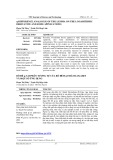
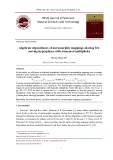
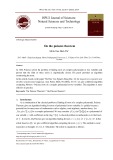
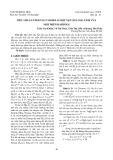
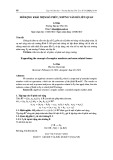
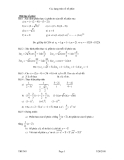

![Mã hóa mức vật lý: Phần [Thông tin chi tiết/Hướng dẫn/Tổng quan]](https://cdn.tailieu.vn/images/document/thumbnail/2011/20110425/magiethitham/135x160/kythuattruyensolieu_pdf0118_0701.jpg)
















![Quyển ghi Xác suất và Thống kê [chuẩn nhất]](https://cdn.tailieu.vn/images/document/thumbnail/2025/20251030/anh26012006/135x160/68811762164229.jpg)
